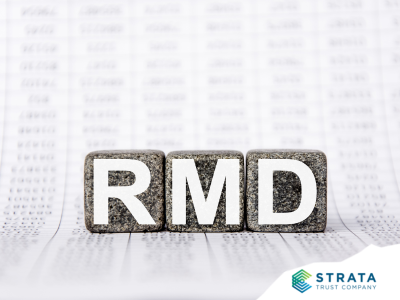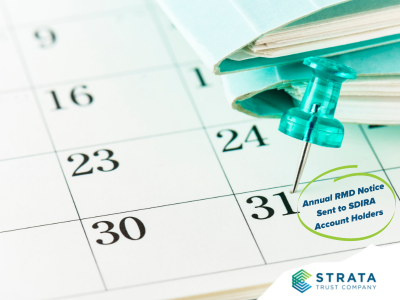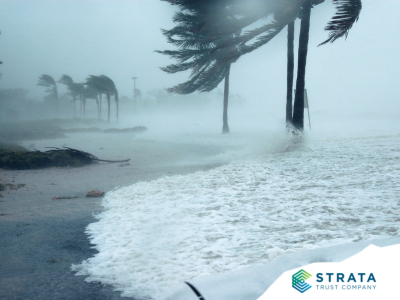If you’re age 72 or older, you must withdraw a certain amount of money each year from your IRAs (excluding Roth IRAs). These “required minimum distributions” (RMDs) are mandated under the Internal Revenue Code to ensure that tax-deferred retirement savings don’t remain sheltered from taxation past you or your beneficiary’s lifetime. Many beneficiaries who inherit IRAs (including Roth IRAs) are also required to withdraw a certain amount each year.
The minimum amount that must be distributed each year is calculated by dividing your prior-year December 31 IRA account balance by a life expectancy factor from one of the IRS life expectancy tables. In years like 2022, when the stock market and other investment values have dropped, your prior-year December 31 account balance may have been much higher than your account balance now. This can make the “minimum” distribution amount feel not so minimal! But there is no waiver for 2022 – RMDs must still be taken by December 31, 2022 (See below for an exception for first-year RMDs). Failure to take an RMD when due will trigger a 50% penalty tax. For STRATA account holders, RMD requests are due December 1, 2022, in order to meet the December 31 IRS deadline.
What’s New?
Life Expectancy Tables for 2022
 The IRS has adjusted the life expectancy tables that are used to calculate RMDs and beneficiary distributions to account for longer life expectancies. This adjustment should result in smaller RMDs because your account balance will be spread over a greater number of years when calculating your distribution amounts.
The IRS has adjusted the life expectancy tables that are used to calculate RMDs and beneficiary distributions to account for longer life expectancies. This adjustment should result in smaller RMDs because your account balance will be spread over a greater number of years when calculating your distribution amounts.
This may help offset some of the pain of calculating RMDs based on a higher December 31, 2021, account balance. Access STRATA’s easy-to-use RMD calculator which includes the updated life expectancy tables or you can refer to the IRS’s RMD worksheets and find additional helpful tools at IRS.gov.
Penalty Relief for Missed 2021 and 2022 Beneficiary Distributions
 The IRS has not yet issued final regulations to implement changes to the beneficiary distribution rules made by the SECURE Act of 2019. But its proposed regulations sent out in IRS Notice 2022-53 released October 7, 2022, indicated that beneficiaries who are subject to the 10-year rule must also take minimum annual distributions when they inherit IRAs from account owners who died after their required beginning date for taking RMDs. Because this interpretation was not expected, there has been some confusion as to whether the annual payments were required.
The IRS has not yet issued final regulations to implement changes to the beneficiary distribution rules made by the SECURE Act of 2019. But its proposed regulations sent out in IRS Notice 2022-53 released October 7, 2022, indicated that beneficiaries who are subject to the 10-year rule must also take minimum annual distributions when they inherit IRAs from account owners who died after their required beginning date for taking RMDs. Because this interpretation was not expected, there has been some confusion as to whether the annual payments were required.
Consequently, the IRS is providing relief from the 50% penalty tax for beneficiaries who did not comply with the proposed regulations and missed an annual payment in 2021 or 2022. If a beneficiary already paid the 50% tax for 2021, they may request a refund. This applies only to beneficiaries who are required to follow the 10-year rule and inherited an IRA from:
- An IRA owner who died in 2020 or 2021 after starting RMDs, or
- A beneficiary who was taking life expectancy payments from the inherited IRA and died in 2020 or 2021
Next Steps
Remember, for STRATA account holders, RMD requests are due December 1, 2022, in order to meet the December 31 IRS deadline. Start planning your strategy today. Investments that are illiquid might slow the processing time; you may want to connect with your financial advisor to learn the best approach for your specific situation.
Access additional financial calculators to discover more about how different scenarios may impact your retirement journey. Learn more about taking your RMD with STRATA at our brand-new knowledge center. You may also contact our self-directed IRA experts with any questions you may have regarding the RMD process for your STRATA account.












